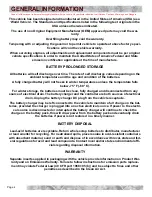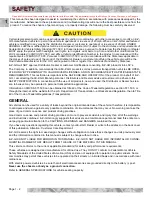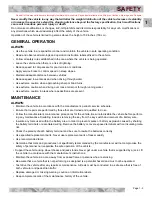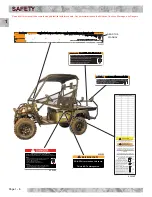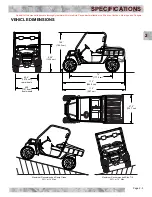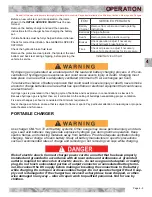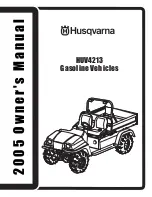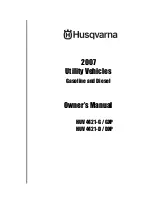
SAFETY
Read all of this manual to become thoroughly familiar with this vehicle. Pay particular attention to all Notices, Cautions, Warnings, and Dangers.
Page 1 - 4
1
The manufacturer cannot anticipate all situations, therefore people attempting to maintain or repair the vehicle must
have the skill and experience to recognize and protect themselves from potential situations that could result in severe
personal injury or death and damage to the vehicle. Use extreme caution and, if unsure as to the potential for injury,
refer the repair or maintenance to a qualified mechanic.
VENTILATION
Hydrogen gas is generated in the charging cycle of batteries and is explosive in concentrations as low as 4%. Because
hydrogen gas is lighter than air, it will collect in the ceiling of buildings necessitating proper ventilation. Five air
exchanges per hour is considered the minimum requirement.
NEVER charge a vehicle in an area that is subject to flame or spark. Pay particular attention to natural gas or propane
gas water heaters and furnaces.
Chargers must be installed and operated in accordance with charger manufacturers recommendations or applicable
electrical code (whichever is higher).
ALWAYS:
• Use a dedicated circuit for each battery charger. Do not permit other appliances to be plugged into the receptacle
when the charger is in operation.
• Charge vehicle in an area free of flames or sparks.
• Operate battery charger in accordance with manufacturers recommendations.




